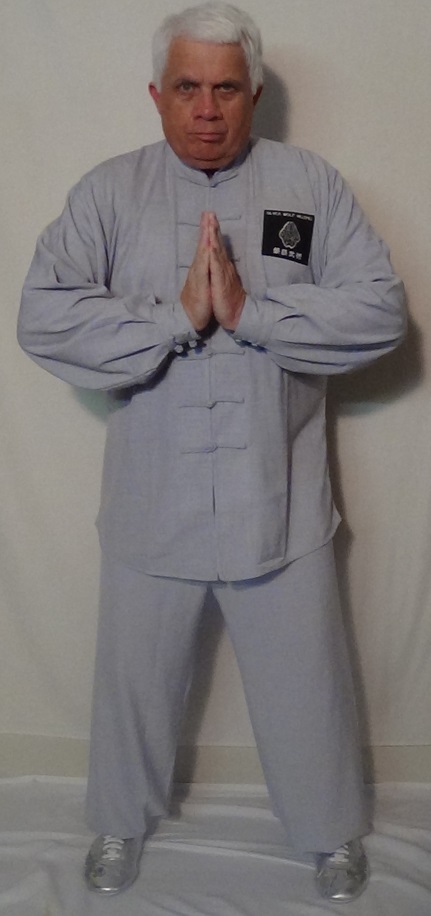|
Internet-based Lessons |
| Chen
Family style Tai Chi Chuan - beginners |
| Bowing and
Saluting |
| Each session
begins and ends with a formal bow. Bowing correctly shows you
have respect and class. |
| The bow
acknowledges the great debt owed to past generations who learned
and taught and polished |
| and preserved the
arts you practice today. The bow is a promise by you to learn
and preserve. |
| If you are
teaching or polishing the arts then the bow takes on a slightly
different dimension. |
| The stance has
feet apart, pointed straight ahead and equidistant from your
projected centerline. |
| Knees are
straight, but not locked nor stiff. Shoulders are balanced and
relaxed. Elbows are bent |
| in a right angle
with the forearms touching the front edge of the chest. The
hands are erect and |
| perpendicular
to the forearms so the fingertips are pointing up toward the
chin. The hand should |
| be over the
centerline with the fingers and palms pressed together. In
secular arts (us) the thumbs are |
| are slightly
relaxed so that the tips do NOT contact the lowest knuckles of
the index fingers. Nor do |
| the inside tips
of the thumbs contact each other. In several sacred styles the
outside edges of the |
| thumbs press
together and the inside edges of the thumbs press against the
index fingers. You bend |
| about 15 degrees
forward at the waist (just a couple of inches), hold the bow a
second or two and |
| then straighten
back up. In an unfamiliar situation this is a good chance to
study the ground ahead |
| and what is to
your sides. In the photo below it is noteworthy that the folds
of the top are not the |
| same on the left
and right arms. Usually, one should teach the students to align
the cuff loops and |
| tug the sleeves
downward to smooth them before bowing. |
 |
